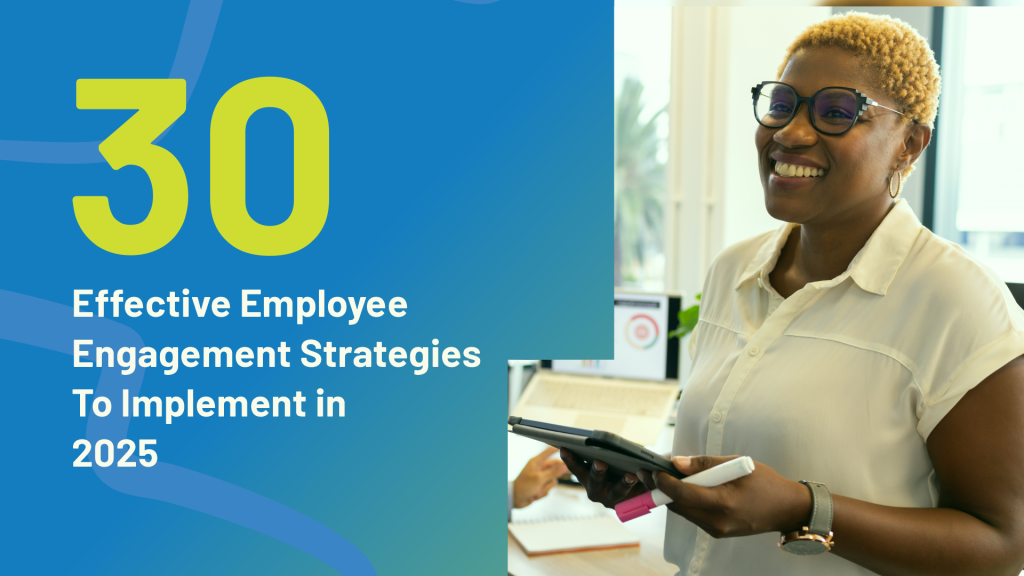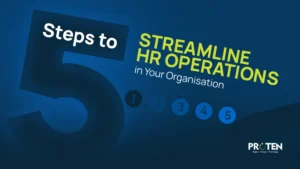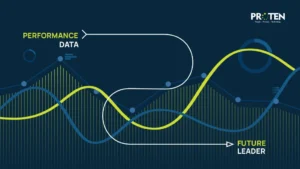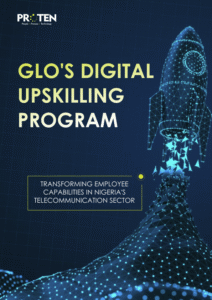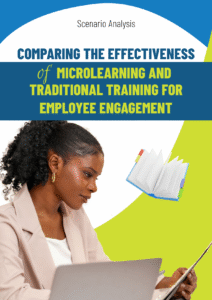Over time, organisations have often associated employee engagement with shallow perks like pizza parties or salary increments. While these can temporarily improve motivation, they fail to address the underlying cause of genuine engagement. Deborah Yemi-Oladayo, MD of Proten International, perfectly describes such activities as merely the “icing on the cake”, since they are ineffective without a solid foundation, understanding and addressing individual employee needs, these efforts fail. Genuine employee engagement starts from recognising and catering to what each employee values, ensuring they feel seen, heard, and connected to the company’s mission.
What then is employee engagement?
Chinedu, our Advisory Manager says Employee engagement refers to the emotional and psychological loyalty employees have towards their organisation and its goals. Engaged employees are naturally enthusiastic about their work, understand their role in the company’s success, and are motivated to contribute beyond their JD.
He is of the opinion that for any organisation to thrive in the marketplace, it must rely on trustworthy and capable employees who can fulfill promises made to customers. This requires employees who are both willing and capable to go beyond their call of duty.
“Employee engagement involves a psychological connection and identification with the organisation, enabling them to exceed expectations. It galvanizes the workforce to strive towards success, empowering them to take ownership and feel energized in their roles.”
—Chinedu Ezeani
Advisory Manager, Proten International.
To further simplify this, Deborah says, “Employee engagement is a strategy that keeps employees motivated and actively aligned with the company’s vision. Different organisations have different cultures, and to engage an employee effectively, one must understand what is important to them. Defining the demographics of your workforce is crucial, as it largely determines how you will engage them. For instance, activities like boat cruises or spa sessions might appeal to newer generations but may not interest baby boomers or millennials, hence, understanding what is important to your workforce helps determine the exact kind of engagement strategy to deploy.”
What employee engagement is not
Employee engagement is not a lazy approach of expecting that one size fits all, as getting employees free lunches or occasional bonuses do not build genuine commitment. True engagement is worked for, it requires a deeper connection between the employee and the organisation, it is built on trust, recognition, and alignment with the company’s mission and values.
Why should organisations take employee engagement seriously?
Disengaged employees can have a significant negative impact on your firm. According to Gallup’s State of the Global Workplace: 2023 Report, disengaged employees cost the world $8.8 trillion in missed productivity, which accounts for 9% of global GDP. In 2024, the global percentage of engaged employees dropped from 23% to 21%, with managers feeling especially demotivated and disengaged. 
On the other hand, engaged employees result in 23% higher profitability, 18% higher productivity, 10% higher customer loyalty, 43% lower turnover in low turnover firms, and 70% fewer safety accidents.
These figures explain the concrete benefits of cultivating a truly engaged workforce. So, let’s explore 30 proven employee engagement strategies that are currently working in 2025
30 Best Employee Engagement Strategies in 2025
With over a decade of helping organisations manage people, processes, and systems, let us explore proven strategies that we have seen worked over time and how organisations can implement the same to improve employee engagement.
- Recognise and celebrate achievements
Recognise and appreciate employees even for small milestones. A thank-you email, a handwritten note, or a 1-on-1 moment of acknowledgement can go a long way.
It’s been proven that appreciation meets a core emotional need; the desire for one to feel seen and valued. When this is done thoughtfully and in ways that matter to each person, it can boost motivation and strengthen employee loyalty.
2. Enhance job roles for growth
Employees disengage when their tasks feel repetitive or uninspiring. Keeping things fresh by enhancing their roles, adding variety, introducing new challenges, or letting them take ownership of a project make their job feel more interesting and challenging than repetitive.
Why it works:
The human brain craves growth and challenge. When roles evolve and offer new learning opportunities, high performers stay stimulated, motivated, and more committed to long-term success.
3. Understanding and respecting people’s mental space
Life happens, even during work hours. Recognising when an employee is going through a tough time and offering genuine support can improve engagement and loyalty.
People never forget how they were treated during difficult seasons. Showing empathy builds trust, fosters emotional safety, and turns your workplace into a community, not just a company.
4. Make employees opinion count
Engagement often starts with being heard. When employees share ideas, they want to see them considered and ideally implemented. It makes them feel respected, empowered, and part of something meaningful.
Why it works:
When people see their input driving real results, they feel a strong sense of ownership and belonging. Ignoring their voice does the opposite, it creates detachment and silence.
5. Foster open and transparent communication
Employees disengage quickly when leadership promises open communication but punishes honesty. If people fear their words will be used against them, they’ll shut down and stop contributing.
Typically, trust usually thrives in psychologically safe environments. Hence, when people feel safe to speak up without backlash, collaboration improves, innovation grows, and team engagement increases.
6. Personalise management approaches
One-size-fits-all management is a lazy approach to management and a quick route to disengagement. People are wired differently, some respond to structure, others to flexibility so take time to understand how each person processes feedback, learns, and stays motivated.
Why this works:
Personalised management, rooted in emotional intelligence, shows employees that they matter beyond just their job title. Even in our day-to-day lives, when people feel understood, they become more committed, more productive, and more engaged.
7. Provide clear vision and direction
Nothing disengages employees faster than confusion. When teams don’t understand where the company is headed or how their role fits into the big picture they lose motivation. What you can do is to always define your vision clearly, and revisit it often.
One of the greatest employee engagement hacks is knowing that employees want to be part of something meaningful. When they see how their daily tasks align with long-term goals (monthly, quarterly, or yearly), they work with more purpose and focus.
8. Implement effective performance management
Set clear, SMART expectations at the beginning of every cycle, whether quarterly or annually, clarify roles, timelines, and deliverables. If you’re building a culture of innovation, create space for mistakes and iteration, this is to not encourage failure but give your team room to experiment and learn quickly.
People perform better when they know what success looks like and that occasional failure won’t define them. Clear expectations plus room to grow equals engaged, forward-thinking teams.
9. Encourage collaboration and teamwork
Teams working in silos kill engagement. Employees need an environment where collaboration is encouraged, support is available, and questions are welcomed. When teamwork thrives, engagement will also thrive.
Why it works:
Working together builds trust and momentum. It helps employees feel connected to each other, and to the company’s bigger goals.
10. Utilise anonymous feedback mechanisms
You don’t always know what employees are thinking, while some voices are loud, others are quiet but both matter. Use anonymous surveys to gather honest feedback, especially from underrepresented or introverted team members.
Why it works:
When employees see their input influencing change, they feel respected and involved. Listening empowers and when leaders stop assuming they know best, they unlock the full power of their diverse workforce
11. Train Managers in emotional intelligence
Managers set the tone for engagement hence equipping managers with emotional intelligence skills enables them to better build better relationships, stronger team support, and higher engagement across board. When managers understand their team’s emotional needs, satisfaction rises.
12. Offer flexible work arrangements
Flexibility is one of today’s most valued workplace benefits and a proven driver of retention and engagement. Remote work or flexible hours option not only help employees maintain work-life balance, but boost happiness and productivity.
13. Invest in learning and development
Give employees access to workshops, courses, or certifications that help them grow in their roles and careers. People feel more engaged when they’re growing, but that’s not all, development signals long-term investment in their potential.
14. Leverage technology for engagement
Embrace using tools like surveys and engagement platforms to understand what your team needs then act on it. This will help you improve personalisation, communication, and employee experience.
15. Encourage internal mobility
Creating visible career pathways and supporting cross-functional moves within the company not only helps your employees see a future with your organisation, but encourages them to stay longer and stay more engaged.
16. Implement regular check-ins
Hold frequent one-on-ones to align expectations, offer feedback, and check on well-being. Implement this alongside your quarterly appraisal
Why it works:
Ongoing conversations build trust and show employees that their growth matters.
17. Recognise and reward contributions
Recognition is a powerful motivator. There’s a popular adage that can also be applicable here, it says, He who appreciates a good deed will be helped again. Acknowledging employees’ efforts through rewards or recognition programs reinforces and boosts engagement.
18. Support work-life balance
To improve employee engagement, it’s very important to encourage boundaries. Make space for personal time, and discourage burnout culture by spotting those small harmless signs early.
Why it works:
When people aren’t constantly running on empty, they’re more engaged and productive.
19. Provide opportunities for innovation
Do not just let employees contribute only ideas and solutions, build a culture that involves them in shaping the future of the organisation. It’s important because ownership fuels motivation, and when people help build something, they stay connected to it.
20. Establish clear career paths
Help employees map out where they’re going and how they can get there within your company. One thing that can’t be argued is, clarity creates commitment. If your employees can see the ladder, they’re more likely to climb it.
21. Encourage peer-to-peer recognition
Implementing systems where employees can acknowledge each other’s contributions builds a supportive community and enhances engagement. Peer recognition fosters a positive work culture.
22. Offer competitive compensation and benefits
We can’t talk about employee engagement without mentioning having a competitive compensation plan. Pay fairly and benchmark salaries and benefits regularly to match industry standards- This strategy is from our playbook here at Proten. Over the years, we have helped organisations improve employee retention by doing just this, need help with this, contact us.
Why this works
When compensation meets expectations, people can focus on their work not looking elsewhere with a better pay.
23. Promote autonomy and empowerment
Giving employees the freedom to make decisions and take ownership of their work increases their commitment in seeing results and pride in performance. Trust employees to make decisions and manage their work their way, this essentially leads to pride in performance.
24. Implement wellness programs
Well-being and engagement go hand in hand. Introducing initiatives that support employees physical, emotional, and mental well-being demonstrates a commitment to employee well-being, which enhances engagement
Why it works:
Healthy employees are more present and productive. Offering programs that support physical and mental health can reduce absenteeism and improve morale.
25. Provide access to coaching and mentorship
Mentorship supports long-term development and shows your commitment beyond KPIs.
As a leader, connecting your employees with mentors or coaches that supports their professional growth and helps them navigate challenges, not only leads to increased engagement but also provides employee development.
26. Encourage feedback and continuous improvement
Creating channels for employees to provide feedback and see their suggestions implemented fosters a culture of continuous improvement and engagement. Feedback loops are essential for organisational growth.
27. Create an impactful Onboarding
First impressions always leave a lasting experience. Guess what, employees never forget their experience from pre-onboarding to onboarding and this could influence their decision on whether they intend to stay for long or not. A thoughtful, well-structured onboarding process can help new hires feel welcomed, informed, and confident from day one. So, go beyond the regular paperwork and integrate your new hires into the culture, team dynamics, and long-term goals.
Why it works:
Great onboarding turns new hires into loyal team players. According to a study by Brandon Hall Group, organisations with a strong onboarding process improve new hire retention by 82% and productivity by 70%. This clearly shows that when employees feel set up for success from the beginning, they’re more likely to integrate quickly, perform better, and stay longer.
28. Maintain transparent leadership
Trust thrives in a transparent environment and this is crucial for engagement as employees feel in the loop when they’re more engaged and aligned. Leaders should be open about company goals, challenges, and changes because this builds trust and keeps employees aligned with the organisation’s mission.
29. Implement fair and inclusive policies
Review and update your policies to ensure they’re equitable and inclusive across all demographics. People will always stay where they feel safe and respected because it fuels belonging, and this in turn fuels engagement
Why this works:
Engaged employees want to feel heard and involved in shaping the workplace they’re part of.
30. Adapt to technological advancements
Staying current with technology and providing employees with the tools they need to succeed keeps the organization competitive and improves employees’ experience.
Conclusion:
In 2025, employee engagement has gone beyond traditional perks, it’s about creating a culture where employees feel valued, heard, and integral to the organisation’s success. Implementing these strategies isn’t just about boosting engagement, it’s about building a workplace where employees thrive.By implementing these strategies, companies can build a motivated, innovative, and loyal workforce that drives long-term business success and growth. Need expert help with building a company’s culture or structures that fosters employee engagement? Schedule a free consultation call with our team of experts here.

